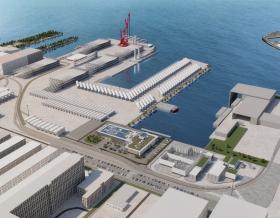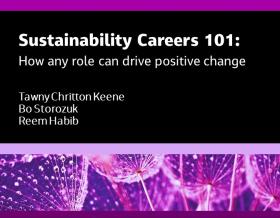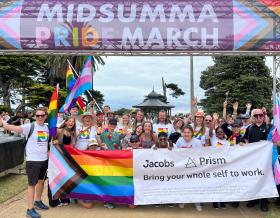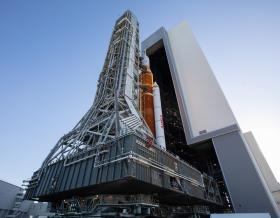
As the lead for Jacobs’ U.S. Coastal Resiliency Program, Luce Bassetti brings the company’s climate response programs into sharp focus. With a strong background in coastal modeling and resiliency planning, she adds extensive international and technical experience to Jacobs’ innovative Gulf Coast team including her recent podcast and book contribution. We sat down with Luce to talk about her work, her home base in Houston and her hopes for the future.
Tell us a bit about yourself and your career with Jacobs so far.
I started as a coastal modeler, working in many countries worldwide, including the United Arab Emirates, China, Trinidad, Costa Rica, the United Kingdom and multiple locations in the United States. Over the years, I have grown into my current role as a leader on the coastal U.S. team and community of practice lead for coastal planning and engineering.
I see myself as a dreamer and a doer, and I genuinely care about people. As a European immigrant who grew up in Narbonne in southern France, I am where I am today thanks to my amazing and supportive family who always believes in me, even from 5,000 miles away.
You’ve been working in maritime and coastal engineering for more than 18 years. What first attracted you to the field? How did you get started?
It might sound very cliched, but I grew up by the beach. I’m a divemaster and swimmer, and I even served as a lifeguard. I felt my calling was to understand the ocean better. I wanted to protect the coastline, which grew into wanting to be a diver for my career. I took a leap of faith, finished my bachelor’s degree in France, then transferred to the U.S. for my master’s and Ph.D. A year into my Ph.D., I had the opportunity to start a job as a coastal modeler, so I started my career juggling school and work.
What sorts of tools do you use to model an extreme weather event? What are you measuring and why?
At Jacobs, we use an ensemble of tools and numerical models to best fit locations and characteristics (estuary, open water, sand, cliffs and so on) to reproduce and predict extreme natural events, such as hurricanes, tsunamis and coastal storms, as well as the long-term risks of sea-level rise and coastal flooding and erosion. Extreme weather events and severe conditions can cause devastating impacts from waves, water levels, surges and current speed. Sophisticated numerical models can generate hazard scenarios and vulnerability conditions to provide meaningful risk assessments, which help us plan and design solutions to protect people and infrastructure.
You are working on the Tyndall Air Force Base “Installation of the Future,” a base-wide facilities upgrade after Hurricane Michael devastated the base. What is so special about this project?
This project is indeed incredibly special to me. The focus of this program is on creating a resilient, sustainable and smart installation of the future. The program uses nature-based coastal solutions and other approaches to provide multiple lines of defense against storm events.
While working on this program, I met a team of determined experts creating efficient solutions to understand better planning and land use, transportation, water and wastewater, energy, economics, community resilience, ecosystem, health and much more. By going to the base, seeing the disaster impacts firsthand and listening to military staff, our team was better able to understand the benefits of our design choices, like improved mental health. This strategy gave us another layer of purpose for this project. We’re not only building a structure, trying to anticipate the economic, environmental, social and health impacts; we are literally building the future.
What part of your work gives you the most hope for the future?
The next generation gives me hope—a new mindset where social equity, innovation and entrepreneurial vision will fuse the physical, digital and biological worlds. This world is where teamwork will be the new normal. We are working now toward clean energy, water, biodiversity and nature-positive solutions. The changes in technology are so fast that I’m hopeful we will find a collective approach to enhance the resilience of our planet and our societies.
What do you like best about living and working on the Texas Gulf Coast?
We were first attracted to Texas by the year-round warm climate. We’re a family of travelers and the Texas Gulf Coast provides a great home base with lots to do locally and connections to see all the great things this country has to offer. Texas is moving fast and ready to make changes to protect its coastline and its people, and I’m ready to do more and be part of the positive change.
What do you enjoy most about being part of #OurJacobs team?
When I started in Tampa, Florida, I met so many diverse people who made me feel welcome and part of a work family. No matter what office I’ve worked in, this feeling has never left. It has always been a part of #OurJacobs DNA, not just part of our makeup, but a difference in perspective, essential to delivering the innovative solutions our clients and communities want.
You might be interested in...
-
 News
NewsQ&A: Talking with Environmental Program Manager Robb Fishman
We sat down with Robb to talk about resiliency, climate response and community.
-
 Page
PageDelivering Resilience
It’s time to think differently about the future — about how we prepare for and respond to natural, societal and economic risks. Jacobs delivers comprehensive infrastructure, technology and intelligence solutions to help governments, cities and private sector clients survive, recover, adapt and thrive regardless of the chronic stresses and acute shocks they experience.
-
 Showcase
ShowcaseTyndall Air Force Base, Panama City Beach, Florida
In October 2018, Tyndall Air Force Base (AFB) was hit with a Category 5 hurricane which resulted in damage to 100% of its assets. As a result, they have embarked on a rebuilding program that is focused on creating a resilient, sustainable and smart Installation of the Future that leverages innovative solutions in a “system of systems” approach to perform at the nexus of mission assurance, cost efficiency, and social and environmental sustainability.
-
 News
NewsQ&A: Talking with National Lead for Storm Surge Barriers & Gates, Michael Gebman
We sat down with Michael to talk about mega-projects, his expertise and what it’s like to gain experience around the world.
Join #OurJacobs team
What drives you drives us as we work to build a better world – together. At Jacobs, every day is an opportunity to make the world better, more connected, more sustainable.
We’re always looking for dynamic and engaged people to join our team. Bring your passion, your ingenuity and your vision.












2c4e.jpg)


















_0ac2b.jpg)









2747.png)














